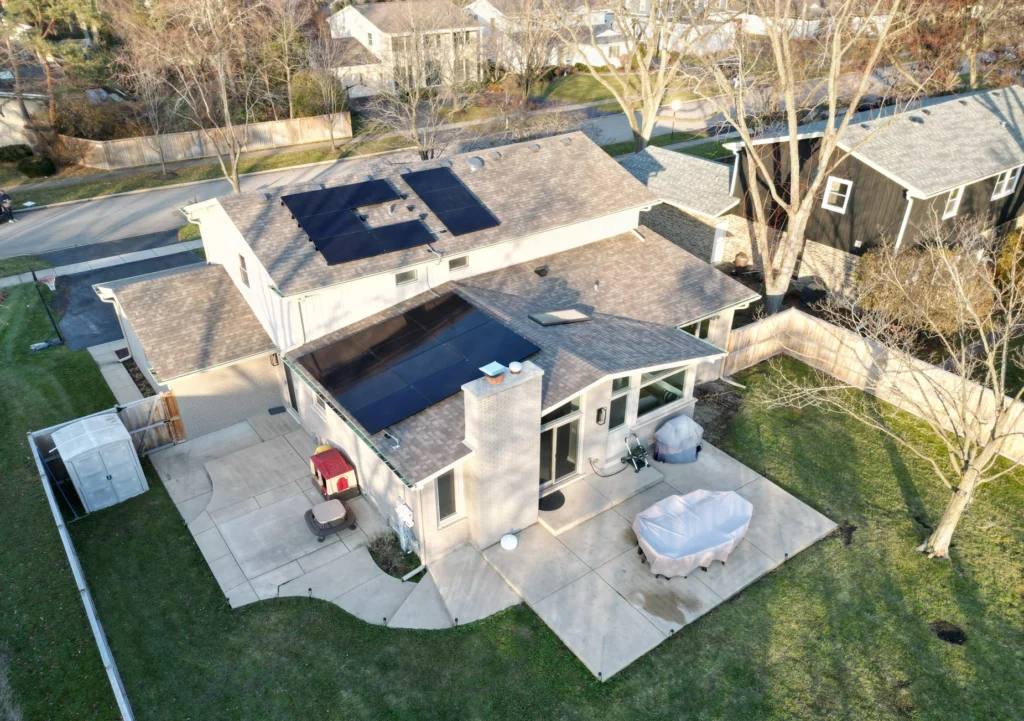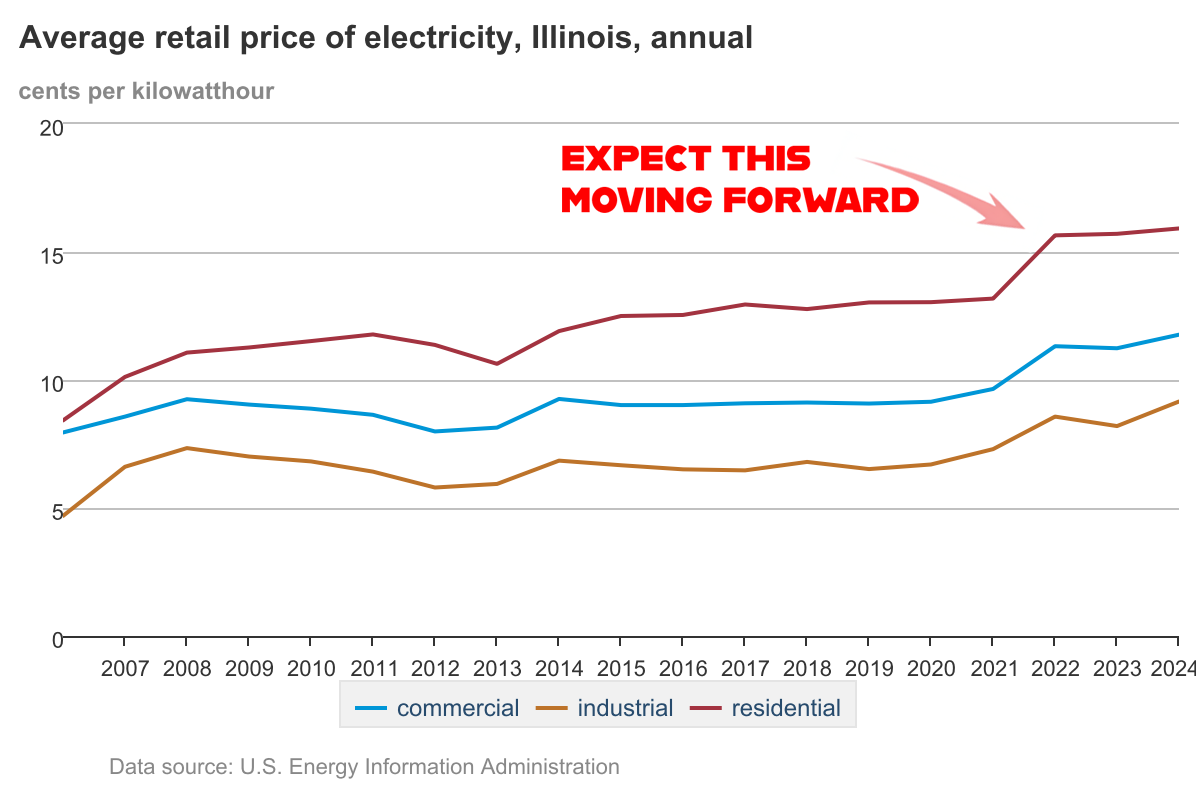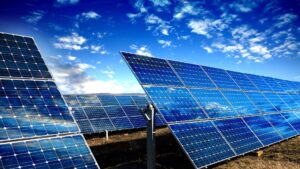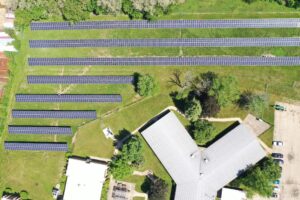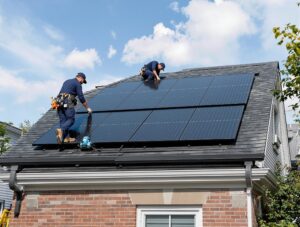That Shock You Felt Opening Your ComEd Bill? It’s Not Just You.
Let’s talk about that moment.
You opened your ComEd bill this summer and felt that little jolt. The double-take at the total, the quick mental math, trying to figure out what you possibly could have done differently. Did you leave the lights on? Was it the air conditioning?
If you felt like your bill suddenly exploded, you were right. In June 2025, many ComEd customers saw the supply portion of their bills shoot up a staggering 22%, leading to an overall increase of 10-15% for most households.
So no, you’re not imagining things. And you are not alone. That same shock was felt in kitchens and home offices all across Northern Illinois.
The easy answer is to blame the summer heatwaves, and sure, running the AC adds up. But that’s like blaming a puddle for a flood. The real reason your bill is skyrocketing is bigger, more complex, and frankly, more infuriating. It’s a story about a broken system, hundreds of miles away, that’s been quietly rigging the game against your wallet.
And it’s time to introduce the players.
Meet PJM: The Hidden Driver of High Illinois Electricity Prices
You’ve probably never heard of PJM Interconnection, and that’s by design. Think of them as the stock market for electricity, managing the wholesale power grid for 13 states, including all of Northern Illinois. Their job is to make sure there’s always enough power to go around, especially on the hottest days of the year.
To do this, they hold something called a “capacity auction.” It’s essentially a bidding process where power plant owners get paid today to guarantee they’ll be able to produce electricity in the future.
For years, this was a relatively boring, low-cost part of your bill. Not anymore.
In the auction for the 2025-2026 year, the price for that guarantee skyrocketed. The total cost consumers will have to pay ballooned from $2.2 billion to a staggering $14.7 billion. For most of Illinois, the price per unit of power jumped from $28.92 to $269.92—an 830 percent increase in a single year.
And here’s the kicker: that cost doesn’t just vanish into thin air. PJM passes it down, and it lands squarely on the “supply” portion of your ComEd (and other major utility companies in Northern Illinois) bill—the exact part that shot up 22% this summer.
But how a price jumps 830% in a single year isn’t just bad luck. It’s a symptom of a much deeper problem. And it’s where this broken system truly begins to show its cracks.
Paying Twice for Zombie Power Plants: The RMR Problem
If an 830% price hike sounds absurd, what if I told you that in many cases, you’re paying for the problem twice?
Welcome to the world of “zombie” power plants. These are old, inefficient, and expensive coal and gas generators that are long past their retirement date. They can’t compete in the modern market, so they announce they’re shutting down.
But then PJM gets nervous. They worry that losing that power, however inefficient, could hurt the grid’s reliability. So, they cut a special deal called a “Reliability-Must-Run” (RMR) agreement. It’s a backroom contract that gives the outdated plant a pile of money to stay open. And guess who pays for that contract? You do. That’s the first time you pay.
But this is where the genius of a broken system really shines.
After paying to keep this zombie plant alive, PJM turns around and holds its big capacity auction. And when they do, they pretend that plant doesn’t exist. They don’t count the power it provides.
It’s like paying a scalper to hold back 100 tickets to a concert, which makes the remaining tickets seem much rarer and drives up the price for everyone else. Then, you have to pay the scalper’s fee and the inflated ticket price.
You pay once for the RMR contract to keep the zombie plant alive. You pay a second time through massively inflated capacity prices because that plant was made invisible during the auction.
It’s a masterclass in making you foot the bill for a broken system. And while you’re busy paying twice for the past, a new, power-hungry future is racing toward us—one that threatens to break this fragile system entirely.
The Coming Power Drain: Why Your Energy Costs Are Set to Climb Even Faster
If paying twice for yesterday’s zombie power plants feels infuriating, get ready for the bill from tomorrow.
Because a new, invisible giant is plugging into the Illinois grid.
Data centers.
They are the physical heart of our digital world, the engines behind artificial intelligence, streaming services, and every click you make online. They are also power hogs on a scale that is hard to comprehend. A single data center campus can demand as much electricity as 80,000 homes.
And Illinois is the new hotspot. Thanks to state incentives, data center construction is booming, especially around the Chicago area.
This isn’t a gentle rise in demand. It’s a vertical climb. For the fragile, manipulated system run by PJM, this is a code red. All this new demand puts unimaginable stress on a grid that is already propped up by zombie plants and backroom deals.
It means more panic. More frantic deals to keep old plants alive. And more astronomically expensive capacity auctions to guarantee power that might not even exist.
The bottom line is simple. Your energy costs are on a collision course with this tidal wave of new demand. The rate shock you felt this summer wasn’t a one-time event.
It was a warning shot.
The Numbers Don’t Lie: A Decade of Accelerating ComEd Rate Hikes
Don’t just take our word for it. The story of your rising electric bill is written in plain, black-and-white numbers from the U.S. Energy Information Administration (EIA).
And the story the numbers tell is brutal.
Imagine a chart of Illinois residential electricity prices over the last two decades. From the early 2000s until about 2013, that line is a gentle, predictable slope. Prices go up, but slowly. Then, around 2014, the angle of that line began to change. It gets steeper. A 38% spike hit customers that year, a shock to the system that was a sign of things to come.
Now, look at the last few years. It’s not a gentle slope anymore; it’s a launch ramp.
- In July 2024, the average residential price in Illinois was 15.23 cents per kilowatt-hour (kWh).
- By July 2025, it had jumped to 17.25 cents per kWh. That’s a 13% increase in a single year.
- The “Price to Compare” for ComEd supply—the part of your bill directly hit by PJM’s auctions—shot up from just under 7 cents/kWh to over 10 cents/kWh on June 1, 2025. That’s a 45% increase in the supply cost alone.
This is the mathematical proof of the broken system. The zombie plants, the rigged auctions, the coming data center drain—you can see it all reflected in the terrifying curve of that line. It is a trend that is programmed to continue, a trajectory that is set to get even steeper.
This data doesn’t just suggest a problem. It screams that the game is rigged, and the house—PJM and the power generators—always wins.
So, what can you do when the game is rigged? You stop playing.
Your Escape Plan: How Going Solar Fights Back Against a Broken Grid
You can’t fix PJM. You can’t stop data centers from being built. And you certainly can’t audit the backroom deals that keep zombie power plants alive.
So, what can you do?
You can make their system irrelevant.
Going solar is not about putting a science project on your roof. It’s a strategic decision to seize control of the one part of your electric bill that is spiraling out of control: the supply.
Think about it. When you generate your own power from your own roof, you are essentially firing PJM as your energy supplier.
- Those rigged capacity auctions that jumped 830%? They become a spectator sport, not a line item on your bill.
- Those zombie plants you were paying for twice? You’re no longer funding their life support.
- That tidal wave of demand from new data centers? It won’t swamp your budget, because you’re no longer swimming in their ocean.
By generating your own electricity, you are effectively locking in your energy supply cost for the next 25 years. You are trading the wild, unpredictable volatility of a rigged market for the simple, predictable cost of your own system.
ComEd still delivers the power through their wires—that part of your bill remains. But the commodity itself, the electricity that PJM and the generators have been using as a weapon against your wallet, is now yours.
It is the single most powerful way to declare your own energy independence. It’s how you stop playing their game and start winning your own.
So, here we are. At a crossroads.
One path leads back to the same kitchen table, holding the same infuriating bill, waiting for the next rate hike.
The other path leads to your roof. It leads to a future where you own your power, control your costs, and have a permanent escape from their broken game.
You’ve seen the problem. You understand the system. You know the solution.
The only question left is: What does your escape plan look like?
Find out. No pressure, no nonsense. Just the numbers. Get your personalized quote from our team right here in Chicagoland and see what it takes to make your home a Windfree home.

